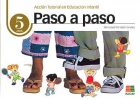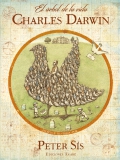Posibilidad de integración de las teorías cognitivas. (Parte VII)
Actualmente, casi todos los investigadores que trabajan en investigación con instrumentos psicométricos tienen en cuenta los puntos de vista de las teorías cognitivas. Por ejemplo, Richaud de Minzi (2002) que ha trabajado en stress y en relaciones interpersonales de los niños siempre señala “la aceptación de los postulados de la perspectiva cognitivista”.
En un trabajo para la tipificación de la forma Avanzada del Test de Raven para la Argentina (Cortada de Kohan y Gentile, 1997) se realizó un análisis de los errores que cometían los examinados y dividimos estos según hubieran cometido un error leve (olvidando solo una variable del problema) o bien hubieran cometido errores más groseros (olvidando tener en cuenta varias variables y dando respuestas totalmente equivocadas o azarosas). La relación entre tipo de errores y puntajes obtenidos resultó muy elevada. Los alumnos del 27% más elevados de la muestra (300 sujetos) cometían no solo menos errores sino que los errores cometidos eran casi todos de tipo leve.
Todos estos trabajos han demostrado que existe un interés muy importante entre nuestros investigadores por relacionar los nuevos saberes de la teoría cognitiva con las posibilidades de obtener evaluaciones centradas, no en el mero resultado final o producto, sino en el proceso de resolución de los problemas que constituyen los ítems de un test. Pero como hemos visto, solo recientemente, al contar con programas adecuados como BILOG, RASCAL, entre otros, se puede establecer un vínculo definido entre Psicometría y Teoría Cognitiva lo que creemos será un gran avance para ambos puntos de vista.
Referencias
Assessment System Corporation. (1989). RASCAL. Rasch item calibration program. St.Paul.
MN.
Attneave, F. (1959). Applications of Information Theory to Psychology. Nueva York: Holt,
Rinehart & Winston.
Bejar, I. I. (1993). A Generative approach to psychological and educational measurement. En
N. Frederiksen, J. Mislevy e I. Bejar (Eds.), Test Theory for a new generation of tests.
NuevaYork: Lawrence Erlbaum Associates.
Binet, A. (1911). Nouvelles recherches sur la mesure du niveau intellectuel chez les enfants
d’ecole. L’Année Psychologique, 17, 145-201.
Boole, G. (1854). An investigation of the laws of thought. Londres: MacMillan.
Broadvent, D.Z. (1958). Perception and Communication. Londres: Pergamon Press.
Brunner, J.S. (1983). Child’s talk. Learning to use language. NuevaYork: Norton.
Cattell, R.B. (1971). Abilities. Their structure, growth and action. Boston: Houghton and
Mifflin.
Carroll, J.B. (1976). Psychometric tests as cognitive tasks. En E. Resnik (Eds.), The nature of
intelligence. Hillsdale: Lawrence Erlbaum Associates.
Carroll, J.B. (1993). Human cognitive abilities. A survey of factor analytic studies. Cambridge,
Mass: Harvard University Press.
Chomsky, N. (1972). Language and mind. Nueva York: Harcourt & Brace.
Cortada de Kohan, N. (1997). Logros en educación primaria y su relación con inteligencia
general y con los procesos de pensamiento en la resolución de problemas. Revista
Latinoamericana de Psicología, 29 (1) , 65-80.
Cortada de Kohan, N. (1998). La teoría de la respuesta al ítem y su aplicación al Test verbal
“Buenos Aires”. Interdisciplinaria, 15, 1-2.
Cortada de Kohan, N. (1999). Teorías psicométricas y construcción de tests. Buenos Aires: El
Lugar.
Cortada de Kohan, N. (2000). Técnicas psicológicas de evaluación y exploración. México:
Trillas.
Cortada de Kohan, N. y Gentile, S. (1997). El Test de las Matrices de Raven (Forma Avanzada)
en jóvenes de 17 años. Interdisciplinaria,14 (1-2), 107-122.
Cronbach, L. J. (1957). The two disciplines of scientific psychology. American Psychologist
12, 671-684.
Cronbach, L.J. (1975). Five decades of public controversies over mental testing. American
Psychologist, 30, 1-14.
Cronbach, L.J.; Gleser, G.; Nanda H. y Rajaratman, J. (1972). The dependability of behavioral
measurements. Nueva York: John Wiley.
Embretson, S. E. (1997). Multicomponent Response models. En W.J. Van der Linden y R.K.
Hambleton (Eds.) Handbook of Modern Item Response Theory. Nueva York: Springer.
Fischer, G.H. (1973). The linear logist test model as an instrument in educational research. Acta
Psychologica, 37, 359-374.
Revista Argentina de Neuropsicología 1, 8 –23 (2003) Posibilidad de integración...
Nuria C. de Kohan
22
Gardner, W. (1988). The contribution of information theory to Psychology. En W.Hirst (Ed.),
The making of cognitive science. Essays in honor of George Miller. Cambridge: Cambridge
Univerity Press.
Glaser, R. (1981). The future of testing. American Psychologist, 36, 923-936.
Guilford, J.P. (1954). Psychometric Methods. NuevaYork: McGraw Hill.
Gulliksen, H. (1950). Theory of mental Tests. Nueva York: John Wiley.
Gulliksen, H. (1961). Measurement of learning and mental abilities. Osychometrika, 26, 93-107.
Horn, J.L. (1966). Refinement of the theory of fluid and crystallized intelligence. Journal of
Educational Psychology,57, 253-270.
Hunt, E.B. (1971). What kind of computer is man? Cognitive Psychology, 2, 57-98.
Hunt, E.B. (1980). Intelligence as an information processing concept. British Journal of
Psychology, 71, 449-474.
Kahneman, D. y Tversky, A. (1984). Choices, values and frames. American Psychologist, 39,
341-350.
Kaufman, A.S y Kaufman, N. L. (1985). Kaufman Tests of Educational achievement.
Comprehensive Manual. Circle Pine, MN: American Guidance Service.
Lazarus, R.S. y Folkman, J. (1984). Stress appraisal and coping. NuevaYork: Springer.
López Alonso, A. (1981). Test de Coherencia. Publicación Nº 65 de CIIPME, Conicet, Buenos
Aires.
Lord, F.M. (1980). Applications of item response theory to practical testing problems. Hillsdale:
Lawrence Erlbaum Associates.
Lord, F.M. y Novick, E. (1968). Statistical Theories of mental tests scores. Reading: Assison
Westley.
McCullock, M. y Pitts, W. (1943). A logical calculus of the ideas inmanenbt in nervous
activities.Bull. of Math. Biophysics, 5, 115-155.
McDermott, L.C. (1954). Research on conceptual understanding in mechanics. Physics Today,
37, 1-10.
Miller, G. (1962/85). Introducción a la psicología. Madrid: Alianza.
Mislevy, R. J. (1993). Formulations of a new test theory. En N.Frederiksen, R. Mislevy y
I.Bejar (Eds.), Test Theory for a new generations of Tests. Hillsdale: Lawrence Erlbaum
Associates.
Neiser, V. (1976). Cognition and reality. Principles and implication of cohnitive psychology.
Nueva York: Freeman.
Newell, A. y Simon, H.A. (1972). Human Problem solving. Nueva Jersey: Prentice Hall.
Piaget, J. (1926). TheLanguage and Thought of the child . Londres: Routledge
Pinker, S. (1994). The language instinct. Nueva York: Harper Collins
Prieto, G. y Delgado, A. (1999). Medición cognitiva de las aptitudes. En J.Olea, V. Ponsoda y
G Prieto (Eds.), Tests informatizados. Fundamentos y aplicaciones. Madrid: Pirámide.
Rasch, G. (1980). Probabilistic models for some intelligence and attainement tests (Reprint).
Chicago: Chicago University Press.
Real, E.; Olea, J.; Ponsoda, V.; Revuelta, J. y Abad, F. (1999). Análisis de las dificultades de un
test de matemáticas mediante un modelo componencial. Psicología, 20,121-134.
Revista Argentina de Neuropsicología 1, 8 –23 (2003) Posibilidad de integración...
Nuria C. de Kohan
23
Richaud de Minzi, M.C. ( 2002). Inventario acerca de la percepción que tienen los niños y
niñas de las relaciones con sus padres y madres: versión para 4 a 6 años. Revista Interamericana
de Psicología,36 (1-2), 149 -165.
Rivière, A. (1991). Objetos con mente. Madrid: Alianza..
Rimoldi, H. (1991). Solución de Problemas. Problemas que trae un problema. En J. Mayor y J.
Pinillos (Eds.), Tratado de Psicología General Vol 5. Madrid: Alhambra Longmans.
Roselli, N. (1999). Identidad lógica y rariabilidad representacional en tarea de resolución de
problemas. Interdisciplinaria, 16 (1), 75-97.
Shannon, S. y Weaver, W. (1981) Teoría matemática de la comunicación. Madrid: Forja.
Spearman, C. (1904). General intelligence objectively determined and measured. American
Journal of Psychology 18, 161-169.
Sternberg, R.J. (1981). Testing and cognitive psychology. American Psychologist, 36.
Sternberg, R.J. (1987). La inteligencia humana. Barcelona: Paidós.
Thissen, D. (1993). Repeating rules no longer apply to psychological measurement. En
J.Frederiksen (Ed.), Test theory for a new generation of tests. Hillsdale, NJ: Lawrence Erlbaum
Associates
Thorndike, E.L. (1919). An Introduction to the theory of mental and social measurements.
NuevaYork: Columbia University Press.
Tolman, E.C. (1967). Purposive Behavior in Animals and Men. NuevaYork: Appleton Century
Crofts.
Turing, A. (1950). Computing machinery and intelligence En A.Amderson (Ed.), Controversia
sobre mentes y máquinas. Barcelona: Tusquets.
Tversky, A. y Kahneman, D. (1983). Extensional versus Intuitive reasoning: The conjunction
fallacy in probability judgement. Psychological Review, 90 (4) .
Van der Linden, W.J. y Hambleton R.K. (1997). Handbook of modern Item Response Theory.
NuevaYork: Springer.
Vigotsky, L. (1962). Thought and Language. Cambridge, Mass.: MIT Press.
Vives, J.L. (1538/1947). De Anima et Viota.Obras Completas I-II. Madrid: Aguilar.
Von Neumann J. (1955). The computer and the brain. New Haven: Yale University Press.
Wiener, N. (1948/1985). Cibernética. Barcelona: Tusquets.
Wittrock, M.C. (1990). Generative processes of comprehension. Educational Psychology, 24,
345-376.
Wittrock, M.C. y Baker, L.L. (1985). Testing and cognition. Nueva Jersey: Prentice Hall.
Woodcock-Muñoz. (1996). Bateria R Pruebas de habilidad cognitiva y de aprovechamiento.
Itaka: Riverside Publ.
G R A T I S
-
Un libro de cartón para que los más pequeños aprendan a relacionar imágenes de su entorno más cercano con sus primeras palabras. E...7.95 €
-
El programa está dirigido a alumnos entre 3 y 6 años de cualquier tipo de centro, se desarrolla a través de tres cuadernos estruct...9.80 €
-
Dibujando sobre la enorme cantidad de textos, anotaciones, diarios, mapas y bitácoras de investigación que Darwin dejó, Peter Sís...16.40 €
-
Los ejercicios en esta área incluyen operaciones aritméticas, resolución de problemas, cálculo mental, secuenciación de números, c...2.90 €
ARTÍCULOS RELACIONADOS
- Léxico y estrategias discursivas. Actitudes sociolingüísticas. (Parte I)
- Un latino es el Padre de la Audiología. (Parte I)
- Léxico y estrategias discursivas. Actitudes sociolingüísticas. (Parte IV)
- Léxico y estrategias discursivas. Actitudes sociolingüísticas. (Parte III)
- Léxico y estrategias discursivas. Actitudes sociolingüísticas. (Parte II)
- Un latino es el Padre de la Audiología. (Parte II)
- Dificultades en la resolución de problemas matemáticos y su abordaje pedagógico. Un desafío pendiente para profesores y estudiantes. (Parte II)
- Dificultades en la resolución de problemas matemáticos y su abordaje pedagógico. Un desafío pendiente para profesores y estudiantes. (Parte I)
- Dificultades en la resolución de problemas matemáticos y su abordaje pedagógico. Un desafío pendiente para profesores y estudiantes. (Parte III)











